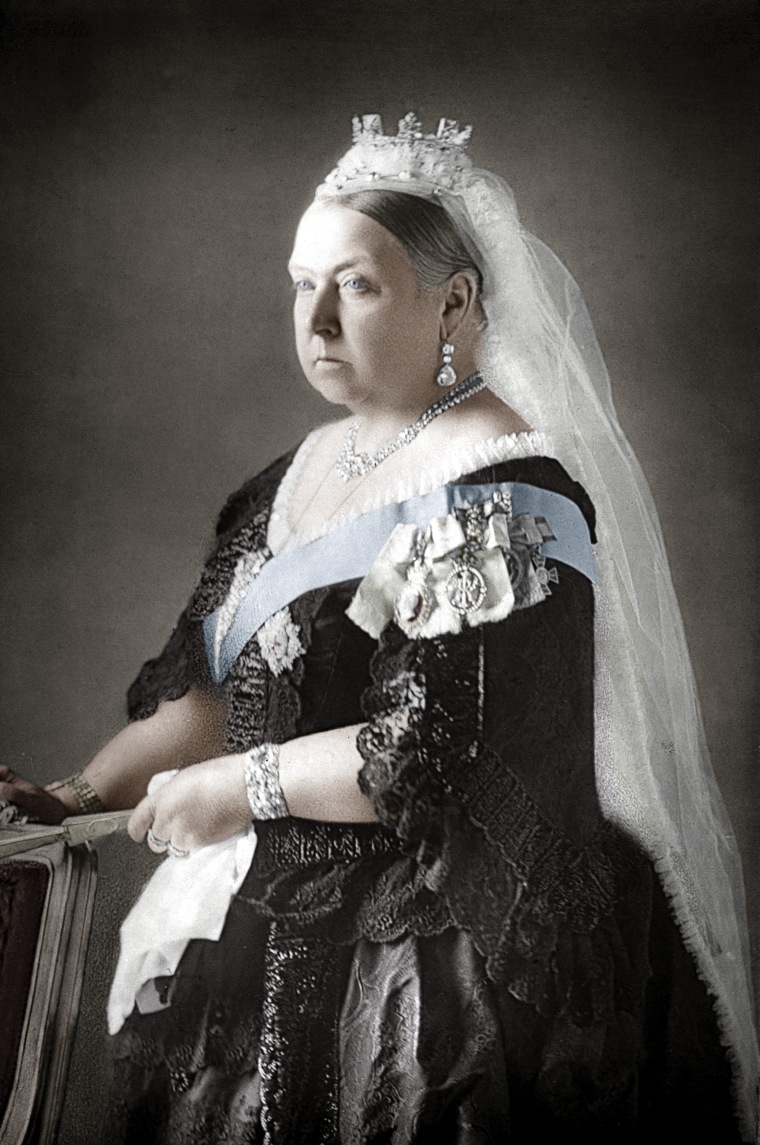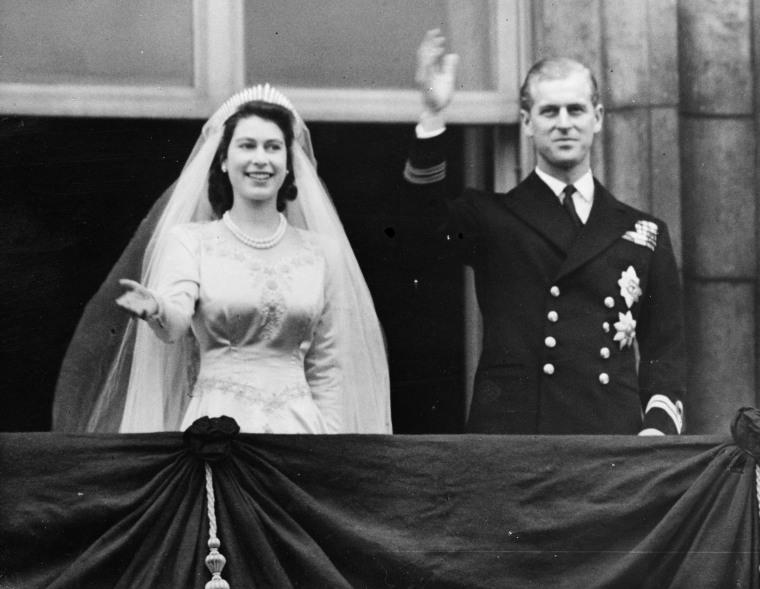LONDON — Queen Elizabeth II will become the longest-serving monarch in British history on Wednesday, surpassing her great-great grandmother Victoria's extraordinary record of 63 years and 216 days.
The 89-year-old queen will better Victoria's record around 5:30 p.m. local time (12:30 p.m. ET).
Both women found themselves on the throne at a young age — Victoria at 18, and Elizabeth at 25 — and both ruled throughout periods of great transformation.
But where do they stack up against each other?
“In both cases the monarchy changed significantly during their reigns,” British historian Andrew Roberts told NBC News. “They were both very good at judging the public mood and modernizing the monarchy accordingly. Both of them, towards the end of their lives, the monarchy became tremendously popular.”
Related: 12 Facts About Britain's Record-Breaking Queen
Victoria acceded to the throne in 1837 and oversaw the British Empire during its peak — at one point ruling over one-quarter of the world’s landmass. She married Prince Albert in 1840, and the pair had nine children who all married into royal or noble families throughout Europe. She had 42 grandchildren, earning the nickname the "Grandmother of Europe."

Victoria was deeply committed to the advancement of the empire, Roberts said, adding that Victorian values laid the foundation for a middle-class confidence that made the Britain “a force to be reckoned with.”
He added: “She became the grandmother of constitutional monarchy. She turned the monarchy from a theoretically absolute monarchy into a constitutionally limited monarchy of the kind that we understand today."
Victoria died a popular queen in 1901, but it wasn’t always that way.
She famously withdrew into seclusion following Albert's death in 1861. She wore widow’s black for the rest of her life, and avoided public engagements for a decade.
Her retreat from the public eye was not unexpected — to begin with. It was convention for a monarch to go into mourning, but her prolonged seclusion gave rise to rumors that she may have gone mad, and helped buoy the republican movement at the time.
“Queen Victoria withdrew,” said Ingrid Seward, the editor of Majesty magazine. “When her husband died she didn't do anything. She didn’t see anyone. She became the invisible queen until way...towards the end of her reign."
Although Victoria didn’t partake in public functions she continued to work in private. She eventually returned to the public eye after her son, Edward — a future king — beat severe illness in 1871.
“Victoria’s years in seclusion could have hurt her is she hadn’t come out of seclusion,” Roberts said. “She realized what the public wanted and adapted herself to it.
“Her achievements are huge in my view and much bigger than any of the males that reigned between [her and Elizabeth].”
While Victoria reigned during the Industrial Revolution, Elizabeth has overseen of period of extraordinary technological advancement and social change.
Roberts said the Elizabeth has a “deft political sense” and had shown excellent leadership both in Britain and throughout the Commonwealth, which he said could have “quite easily fallen apart under different management.”
“She has a sixth sense for what is in the wind,” he said.
Elizabeth formed the Way Ahead Committee after what she described as her annus horribilis in 1992 — the “horrible year” that saw the separation of Prince Charles and Diana Spencer, and Prince Andrew and Sarah Ferguson.

The committee chaired by the queen was behind the Royal Succession Act of 2013, which will see first-born females ascend to the throne. Roberts said the move was an example of the queen’s “forward thinking.”
“That’s a statement towards of feminism, I suppose, that is very much of its day,” Roberts said. “It’s forward thinking, progressive and not at all reactionary — and that was one of the Way Ahead’s recommendations to the politicians, not the other way around.”
Like Victoria, Elizabeth’s public perception was tested by her response to an untimely death: the passing of Princess Diana in 1997. Many were fiercely critical of the queen’s silence in the days following Diana’s death, including her decision to remain on her Scottish holiday estate in Balmoral.
“The death of Diana and the divorce of Diana was the biggest crises of the queen’s reign,” Seward said. “There was a real bristling amongst the loyal subjects of the queen and she felt it.”
The queen returned to London five days later, and on the eve of Diana’s funeral made an unprecedented televised tribute to her ex-daughter-in-law. She also responded to public outcry by breaking protocol and flying the union flag at half-staff above Buckingham Palace — something that had never been done.
“Historically, when there's a death in the family, the royals retreat into mourning,” Seward added. “[The queen] thought the way to deal with the death of Diana was just to stay quiet, look after the boys, go to church and try to keep life on an even keel.”
The tragedy was exacerbated by a ravenous media and a global outpouring of grief — a burden that would have sat uneasily with Victoria.
“The queen knows that nowadays you have to be visible,” Seward said. “Victoria was more of an invisible queen, and in my opinion was far more selfish than our current queen.”
Roberts said the Elizabeth had improved the royal family's image in the years since Diana’s death.
“It was the most unpopular the monarchy has been since the abdication crisis of 1936,” he said. “And by pretty ruthless news management and … the process of time and also through this Way Ahead Committee — she’s actually brought the monarchy back from its lowest point to being almost universally popular.”
Roberts added: “This is a remarkable woman. Not just because of her longevity, but because of her forward thinking on the political problems the monarchy might have.”